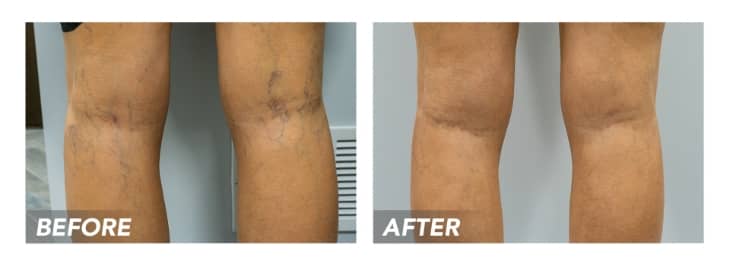Understanding when to see a vascular doctor is crucial to maintaining your overall health and preventing long-term complications. Vascular doctors, also known as phlebologists or vascular surgeons, specialize in treating conditions related to blood vessels, including veins and arteries. The blood vessels play a vital role in transporting blood throughout the body, and any issues in this system can lead to severe health concerns. Let’s dive into some key symptoms that indicate it may be time for a consultation with a vascular doctor, specifically experts like Long Island Vein Experts.
Table of Contents
1. Swelling in the Legs and Feet: A Sign You Shouldn’t Ignore
If you notice swelling in your legs, ankles, or feet, it could be a sign of poor blood circulation. Swelling can occur due to various factors, including vein disorders such as varicose veins, deep vein thrombosis (DVT), or chronic venous insufficiency. These conditions affect how blood flows through your veins, causing fluids to accumulate in the lower extremities.
When to see a vascular doctor for leg swelling is when you experience persistent or worsening swelling, especially if it’s accompanied by pain, redness, or warmth. A vascular specialist can diagnose the root cause of the swelling and recommend appropriate treatments to prevent complications like ulcers or clot formation.
2. Pain or Cramps in the Legs: Could Be an Indicator of Poor Circulation
Do you experience frequent leg pain, cramping, or a feeling of heaviness, especially after standing or walking for prolonged periods? These could be symptoms of peripheral artery disease (PAD), a condition where narrowed arteries limit blood flow to your legs. PAD can cause discomfort, fatigue, and even difficulty walking, making it essential to seek professional help.
If your leg pain or cramps worsen over time or occur more frequently, it’s important to know when to see a vascular doctor. In many cases, PAD can be managed with lifestyle changes, medications, and even surgical interventions, which is why early diagnosis and treatment by experts like Long Island Vein Experts are crucial.
3. Varicose Veins: Not Just a Cosmetic Issue
Varicose veins are enlarged, twisted veins that are often visible just beneath the surface of the skin. While they may not always cause pain, varicose veins can be a sign of an underlying vein disorder, such as chronic venous insufficiency. This occurs when the veins in your legs cannot effectively return blood to the heart, leading to the pooling of blood in the veins.
When to see a vascular doctor for varicose veins is when they cause discomfort, such as aching, throbbing, or a feeling of heaviness in the legs. If varicose veins begin to bleed, form ulcers, or cause significant pain, it’s time to seek medical attention. Vascular specialists can offer treatments like sclerotherapy, laser therapy, or vein stripping to alleviate symptoms and improve circulation.
4. Frequent Leg Fatigue: Could Indicate Circulatory Problems
Do you frequently experience leg fatigue, especially after physical activities? While fatigue can be a common issue after exercise, if you feel constant tiredness in your legs, it may be due to poor circulation or a vascular condition. Conditions like PAD or venous insufficiency can restrict blood flow, leading to tired, weak legs even after minimal physical activity.
If you experience unexplained leg fatigue that persists or worsens, it’s important to consult a vascular doctor. A vascular specialist can assess blood flow, perform diagnostic tests, and recommend treatment options to restore proper circulation, such as lifestyle changes, medications, or surgical interventions.
5. Skin Changes: A Sign of Vascular Issues
Increased blood pressure or poor circulation in your veins can affect the skin on your legs. Skin changes such as discoloration, thinning, or ulcers can indicate an underlying vascular problem. For instance, venous stasis ulcers, which are often found near the ankles, can develop when blood flow to the skin is impaired due to damaged veins.
When to see a vascular doctor for skin changes is when you notice any unusual color changes, open sores, or thickening of the skin. Timely intervention can help prevent the development of serious complications such as infection or ulcers that are slow to heal.
6. Cold or Numb Legs: A Warning Sign of Arterial Blockage
If you notice that your legs feel cold, numb, or tingly, it could be a sign of restricted blood flow caused by arterial blockages. Conditions such as PAD or atherosclerosis (hardening of the arteries) can reduce the amount of blood reaching the legs, leading to sensations of coldness or numbness.
These symptoms should not be ignored, especially if they are persistent or associated with other signs such as leg pain or cramping. Knowing when to see a vascular doctor for these issues is critical, as untreated arterial blockages can lead to severe complications, including tissue damage or amputation. A vascular expert can perform tests to determine the extent of the blockage and suggest appropriate treatments.
7. Non-Healing Wounds: A Red Flag for Poor Circulation
One of the most concerning symptoms related to vascular issues is the appearance of wounds or ulcers that do not heal, particularly on the legs or feet. Poor circulation can make it difficult for your body to deliver oxygen and nutrients to the wounded area, slowing down the healing process. Diabetic individuals or those with varicose veins or PAD are more likely to experience non-healing wounds.
When to see a vascular doctor is when you have a wound that refuses to heal, especially if it’s accompanied by swelling, redness, or pain. A vascular specialist can help by treating the underlying cause of the poor circulation, which will, in turn, promote faster healing.
8. Visible Bulging Veins: Could Indicate a More Serious Condition
While bulging veins are often seen in athletes or individuals with high blood pressure, they can also be a sign of a more serious vascular issue, such as deep vein thrombosis (DVT). DVT is a condition where blood clots form in the veins, which can lead to severe complications, including pulmonary embolism.
If you notice visible, bulging veins that are accompanied by pain, swelling, or redness, it’s essential to know when to see a vascular doctor. A vascular specialist can determine if a blood clot or another vascular issue is present and recommend treatment to reduce the risk of life-threatening complications.
Conclusion: When to See a Vascular Doctor
Vascular health is an integral part of overall well-being, and recognizing the symptoms of poor circulation or vein-related conditions is key to preventing long-term damage. If you experience any of the above symptoms, it’s essential to consult a vascular doctor for an accurate diagnosis and timely treatment. Early intervention can lead to improved outcomes and prevent complications that could affect your quality of life. For those living in the Long Island area, seeking help from trusted experts like Long Island Vein Experts can provide you with the specialized care you need to manage your vascular health effectively.

